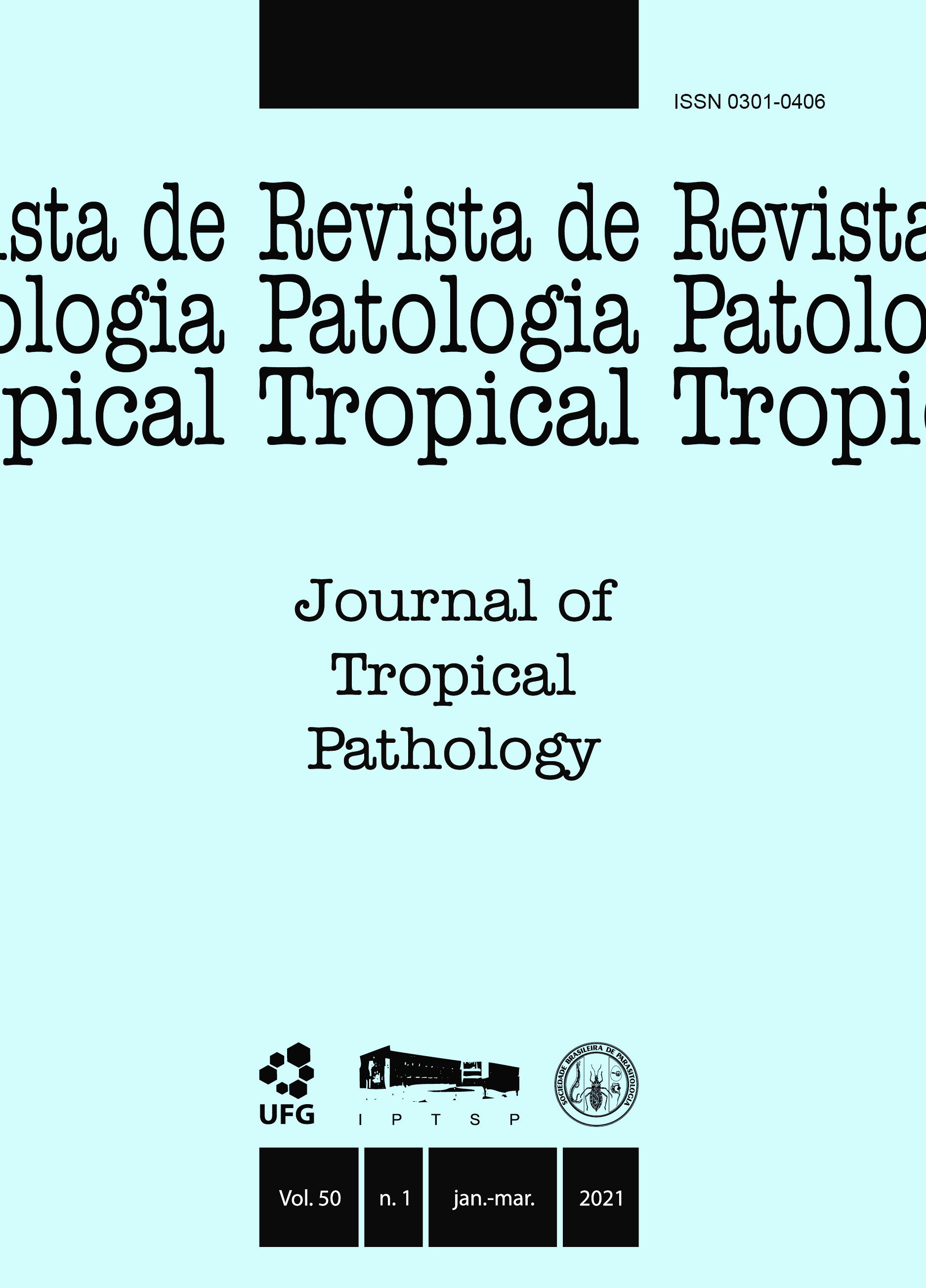Pathological effects of ECHINOSTOMA PARAENSEI infection associated with pyogenic abscesses caused by PSEUDOMONAS AERUGINOSA in swiss mice
DOI:
https://doi.org/10.5216/rpt.v50i1.66670Resumo
The trematode Echinostoma paraensei is an intestinal parasite transmitted by ingestion of the infectious stage of metacercariae. For scientific purposes, its life cycle has been maintained in the laboratory, allowing analysis using various biological approaches. Different parasite isolates have revealed atypical patterns of migration and establishment in ectopic sites in Swiss-Webster mice. During the investigation of the biological life cycle of an E. paraensei isolate from the silvatic rodent Nectomys squamipes collected in the municipality of Rio Bonito (State of Rio de Janeiro), a bacterial coinfection with Pseudomonas aeruginosa was observed, which produced anatomopathological alterations, mainly in the liver, bile ducts, pancreas, and small intestine. The main macroscopic signs were the whitish suppurative pyogenic punctual lesions. The histological sections stained by hematoxylin-eosin showed an intense inflammatory reaction formed by mononuclear cells and macrophages surrounding the bile ducts, although the hepatic parenchyma still presented its normal aspect. Thus, pyogenic abscesses can be associated with E. paraensei infection depending on the strain and aggravating pathogenesis in the definitive host.
KEY WORDS: Liver abscess; Swiss mice; trematode infection.
Downloads
Downloads
Publicado
Como Citar
Edição
Seção
Licença
The manuscript submission must be accompanied by a letter signed by all authors stating their full name and email address, confirming that the manuscript or part of it has not been published or is under consideration for publication elsewhere, and agreeing to transfer copyright in all media and formats for Journal of Tropical Pathology.

